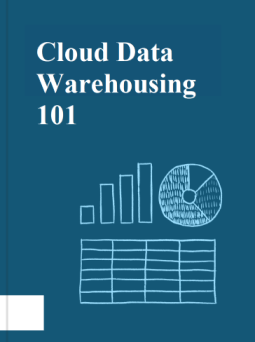What is a Data Warehouse ?

What is a Data Warehousing ?
A data warehouse is a subject-oriented, integrated, time-variant and non-volatile collection of data in support of management's decision making process - Bill Inmon
Subject-Oriented: A data warehouse should be focused to analyze a particular subject area. ex. SalesWH, MarketingWH, FraudWH
Integrated: A data warehouse integrates data from multiple data sources. For example, source A and source B may have different ways of identifying a product, but in a data warehouse, there will be only a single way of identifying a product
Time-Variant: Historical data is kept in a data warehouse. For example, one can retrieve data from 3 months, 6 months, 12 months, or even older data from a data warehouse. This contrasts with a transactions system, where often only the most recent data is kept. For example, a transaction system may hold the most recent address of a customer, where a data warehouse can hold all addresses ever associated with a customer
Non-volatile: Once data is in the data warehouse, it will not change. So, historical data in a data warehouse should never be altered
In this tutorial, you will learn more about:
- What is Data Warehousing ?
- Types of Data Warehouse
- Who needs Data warehouse?
- Steps to Implement Data Warehouse
- What is the difference between a Data Warehouse and a Database?
- Difference between OLTP vs OLAP
- Best practices to implement a Data Warehouse
Types of Data Warehouse
Three main types of Data Warehouses are:
1. Enterprise Data Warehouse:
Enterprise Data Warehouse is a centralized warehouse. It provides decision support service across the enterprise. It offers a unified approach for organizing and representing data. It also provide the ability to classify data according to the subject and give access according to those divisions
2. Operational Data Store:
Operational Data Store, which is also called ODS, are nothing but data store required when neither Data warehouse nor OLTP systems support organizations reporting needs. In ODS, Data warehouse is refreshed in real time. Hence, it is widely preferred for routine activities like storing records of the Employees
3. Data Mart:
A data mart is a subset of the data warehouse. It specially designed for a particular line of business, such as sales, finance, sales or finance. In an independent data mart, data can collect directly from sources
Who needs Data warehouse?
Data warehouse is needed for all types of users like:
- Decision makers who rely on mass amount of data
- Users who use customized, complex processes to obtain information from multiple data sources
- If the user wants fast performance on a huge amount of data which is a necessity for reports, grids or charts, then Data warehouse proves useful
- It also essential for those people who want a systematic approach for making decisions
- Data warehouse is a first step If you want to discover 'hidden patterns' of data-flows and groupings
Steps to Implement Data Warehouse
Here, are key steps in Datawarehouse implementation along with its deliverables
| Step | Task | Deliverable |
|---|---|---|
| 1 | Defining Project Scope | Scope Definition |
| 2 | Requirements Gathering | Requirements Document |
| 3 | Need to determine business needs | Logical Data Model |
| 4 | Acquire or develop Extraction tools | Extract tools and Software |
| 5 | Document missing data | To Do Project List |
| 6 | Mapping attributes from source to the new model | D/W Data Integration Mapping |
| 7 | Develop Data Warehouse Database design | D/W Database Design |
| 8 | Extract Data from Operational Data Store | Integrated D/W Data Extracts |
| 9 | Load Data Warehouse | Initial Data Load |
| 10 | Maintain Data Warehouse | On-going Data Access and Subsequent Loads |
What is the difference between a Data Warehouse and a Database?
Data warehouses and databases are both relational data systems, but were built to serve different purposes. A data warehouse is built to store large quantities of historical data and enable fast, complex queries across all the data, typically using Online Analytical Processing (OLAP). A database was built to store current transactions and enable fast access to specific transactions for ongoing business processes, known as Online Transaction Processing (OLTP)
Difference between OLTP vs OLAP
| OLTP | OLAP |
|---|---|
| Optimized for Transactions (Inserts, Updates, Deletes) | Optimized for Analytics |
| It is characterized by large numbers of short online transactions | It is characterized by a large volume of data |
| Tables in OLTP database are Highly normalized (3NF) | Tables in OLAP database are de-normalized |
| Faster queries on less volume of data | Analytical queries on huge volume of historical data |
Best practices to implement a Data Warehouse
- The data warehouse must be well integrated, well defined and time stamped
- Decide a plan to test the consistency, accuracy, and integrity of the data
- While designing Datawarehouse make sure you use right tool, stick to life cycle, take care about data conflicts and ready to learn you're your mistakes
- Don't spend too much time on extracting, cleaning and loading data
- Never replace operational systems and reports
- Ensure to involve all stakeholders including business personnel in Datawarehouse implementation process. Establish that Data warehousing is a joint/ team project. You don't want to create Data warehouse that is not useful to the end users
- Prepare a training plan for the end users